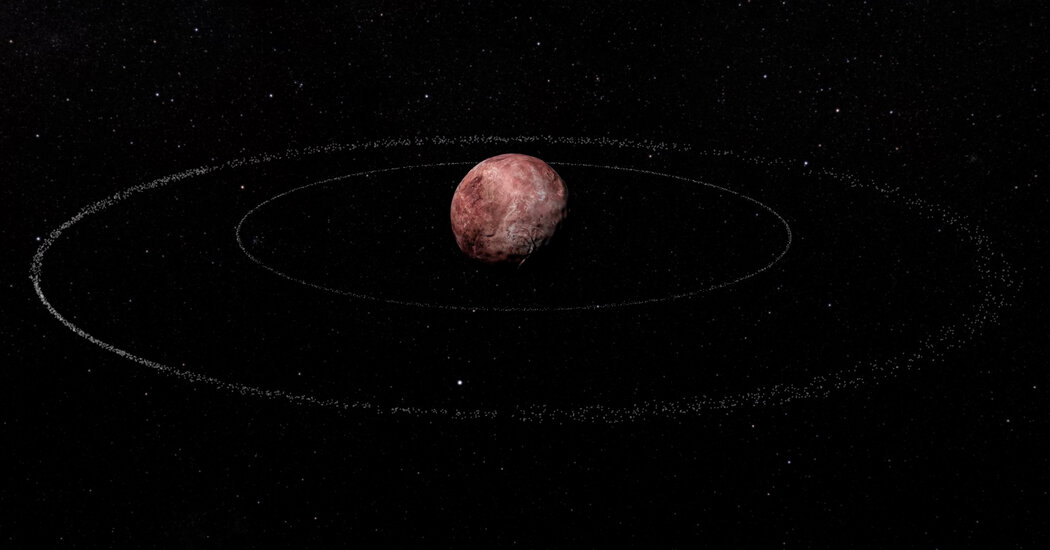Thousands Flock to See a Rare Total Solar Eclipse in Australia
For the tens of thousands of astrophotographers, eclipse chasers and cosmically minded tourists contemplating the best site from which to view Thursday’s total solar eclipse, the town of Exmouth, perched on a finger of land jutting from Australia’s west coast, was the simplest solution to a problem of extreme scarcity.
The narrow ribbon across the planet from which the eclipse could be seen crossed land in just four places: the remotest reaches of East Timor and Western Papua, in Indonesia; freckle-like Australian islands, one of which is controlled by the oil company Chevron; and Exmouth, a tiny tourist destination and former U.S. naval base 770 miles from the nearest city.
When the moment arrived around midday, the expectant swarm of visitors on the town’s beach watched as bands of palest aquamarine and deep slate gray passed across the sea. Seagulls dispersed. In the shadows of palm fronds, spots of light exploded into crescent moons. Winds changed direction. Stars came twinkling into view, in a strangely foreboding sky. Temperatures plummeted, and people began to hug themselves and one another.
Then, basking in the shrinking sliver of sunlight, Tara D’cruz-Noble, Bob Mackintosh and their children, Eliah and Luella, lay down on the silvery sand and removed their eclipse glasses.
Darkness barreled in, and, for a terrible minute, the moon entirely occluded the light of the sun — except for its dancing orange corona, the outermost part of the sun’s atmosphere that is usually hidden by its powerful light.
Then, just as quickly as it had disappeared, the sun re-emerged on the other side of the moon, and a loud cheer perforated the hush: “Welcome back!” Ms. D’cruz-Noble hugged Luella, then ran her hands up and down her arms. “I’ve still got goose bumps,” she said.
It felt as though the world had stopped.
And yet for Exmouth, a town of 3,000 people, the event was the celestial gift that no one asked for.
Every year, Exmouth sees a regular influx of a few thousand vacationers, drawn by its pristine reef and resident whale sharks. But to accommodate a mass of 20,000 or 30,000 visitors required years of planning and millions of dollars in state support that went toward infrastructure updates, hundreds of portable toilets, dozens of additional emergency workers, the clearing of five acres of forestland and a 1.5-million-gallon water tank.
“It sounds pretty daunting, doesn’t it?” said Darlene Allston, a top local official.
In many instances, hotels and other tourism operators first learned of the eclipse from savvy tourists who booked their accommodations four or more years earlier. When someone emailed the town’s visitor center in 2018 seeking a booking, “We thought it was a joke at first,” said Jessica Smith, who worked there.
The town has no recycling system, only recently got its first store from which one might purchase underwear, and has so few places to eat that locals avoid visiting them too often “so we don’t get sick of the options,” as Sonia Beckwith, who owns a tourism business and is originally from Washington State, put it.
The arrival of tens of thousands of visitors, as well as dozens of food trucks and a free three-night music festival, shook the town to its core. “We’re not used to this,” Ms. Beckwith said.
Some enterprising business owners seized on the opportunity to make a quick buck, or even thousands, with rooms priced at many multiples of their usual high-season peak.
“It’s tough when you have a unique solar event as leverage,” said Laurence Randor, who had driven from Perth at the urging of his three teenage children. “Camping is the price to pay.”
For people like Kryss Katsiavriades, a retired data analyst who had traveled from London with his wife, Talaat Qureshi, to witness his 30th eclipse, weather is an all-important consideration. Exmouth, a town of clinging red dust, silken sands and scrubby sun-bleached grasses, offered excellent odds on a clear blue sky, he said.
“You’ve got to see the whole thing,” he said.
Exmouth’s brush with celestial spectacle was a result of sublime serendipity. If not for the 55-mile-long peninsula on which Exmouth sits, hugging the Indian Ocean, the total eclipse would have missed Australia altogether.
As if to compound this stroke of luck, a Category 4 cyclone that delivered record-breaking winds to Western Australia days earlier missed the peninsula altogether, clearing it by hundreds of miles.
Then there is the astronomical oddity that makes eclipses possible. Of the 227 moons that orbit planets in the solar system, only the Earth’s is the right size and distance away to precisely cover the sun in the sky.
That perfect ratio is changing, as the moon drifts further and further away from the Earth, said Robin Cook, a researcher at the University of Western Australia. In millions of years’ time, “we won’t have total solar eclipses ever again,” he said. “We’ll only have these annular ones” — ring-like eclipses that occur when the moon does not cover the sun — “and, eventually, maybe not solar eclipses at all.”
“All these coincidences — it just seems so unimaginable that it can happen,” Dr. Cook said. “And yet, here we are.”
This year’s eclipse took place almost exactly a century after the 1922 solar eclipse in Australia that provided scientists the opportunity to confirm the “proof” of Albert Einstein’s general theory of relativity.
David Blair, a physicist and professor at the University of Western Australia, called that “the most significant scientific experiment ever done in Australia, in my opinion.” He said that he was thinking of those who had helped with that work, including dozens of Aboriginal people and the wives of scientists, whose efforts had been unsung but who had provided their own “deeply human” accounts of the experience.
On the town beach on Thursday, Ms. D’cruz-Noble, Mr. Mackintosh and their family, who had traveled from the state of New South Wales, looked by turns elated and dazed as light returned to the sky. Despite a shared love of photography, neither had reached for the camera, Ms. D’Cruz-Noble said.
“Mother Nature has a way of saying, ‘You need to take notice, right now,’” she said.
Mr. Mackintosh reached surreptitiously into a cool bag for a bottle of Champagne — which made its presence known as the cork erupted from the bottle and flew onto the sand.
Other viewers, as if called by the waves, plunged into the ocean. (A nine-foot crocodile reported in the area the week before failed to materialize.)
For some, it was a moment months in the making. Wesley Garth, a 16-year-old astrophotography enthusiast from West Gippsland, in the state of Victoria, worked six months of shifts at McDonald’s to fund his journey, which included two flights and a seven-hour bus ride.
It was more than worth the trouble, he said. “Solar prominences, corona, oh my god!” he said. “It was life-changing. I’m still trembling.”


